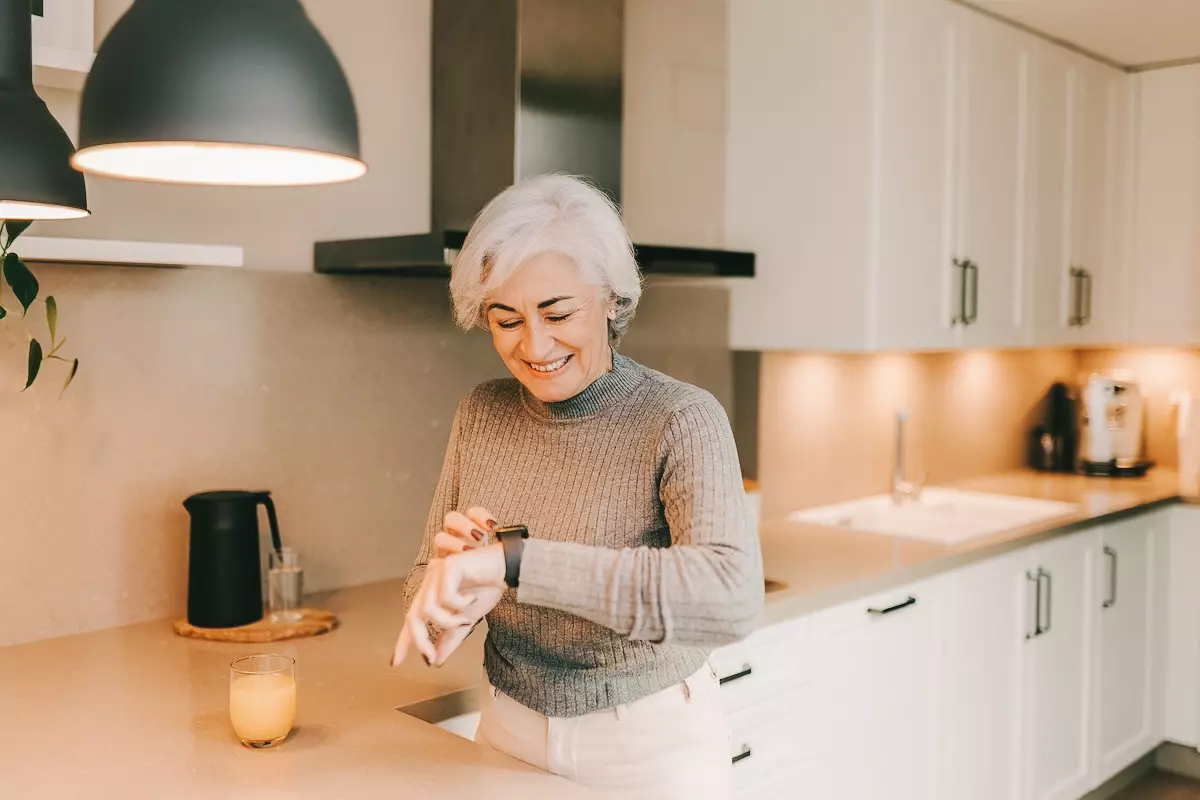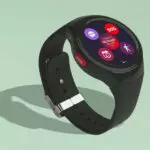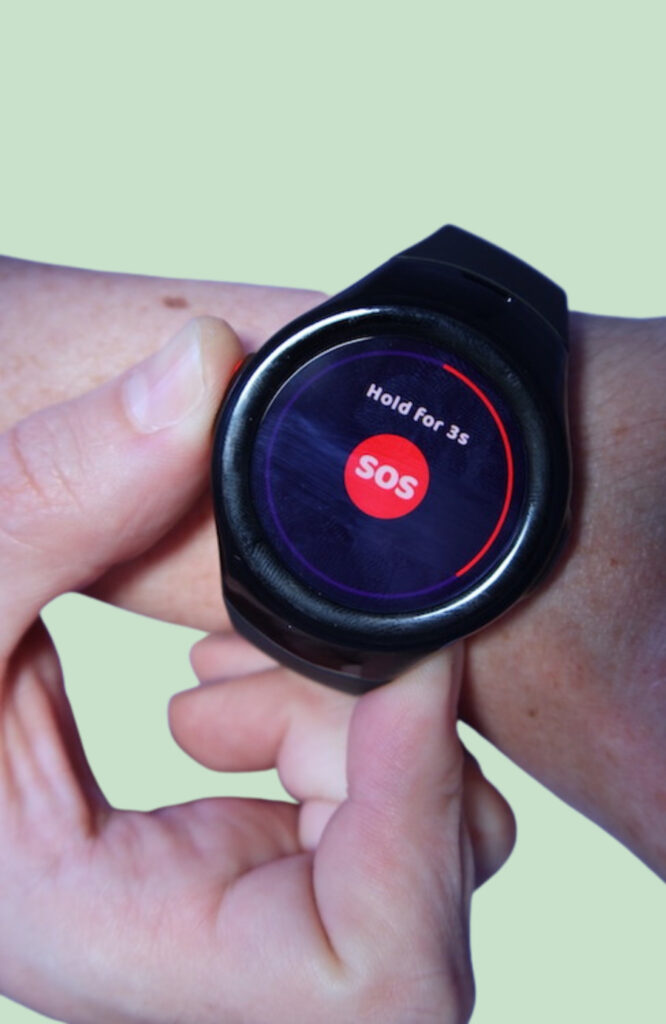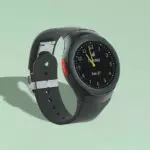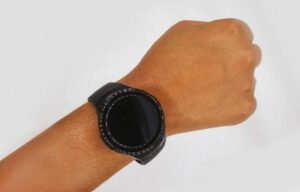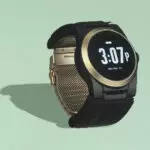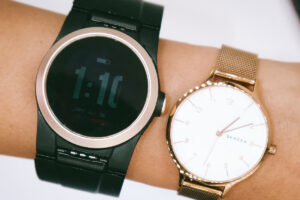Table of Contents
These products & services are researched and tested by HelpGuide’s independent consumer reviews partner. When you buy through the links, we earn a commission.
Even if you realize the benefits of having quick, 24/7 access to emergency assistance after a recent injury or lifestyle change, you still may not feel ready to wear a traditional medical alert necklace. Although medical alert necklaces have grown more discreet in the past few years, they still look and feel more obvious than some alternatives, like medical alert watches.
Medical alert watches resemble smartwatches, but they work the same way as most medical alert systems. You just press a button to connect to a 24/7 monitoring center and speak with the operator straight from your device. Having a trained operator available at all times from your medical alert watch can offer you and your caregivers a sense of security without exchanging comfort and discretion for protection.
And with a medical alert watch, there’s no need to worry about a smartphone. Unlike Apple Watch and other popular smartwatches, the best medical alert watches don’t require a smartphone.
“Medical alert watches can be very effective in enhancing the wearer’s safety,” says Raj Dasgupta, chief medical advisor for Sleep Advisor. “They provide quick access to help in an emergency, reduce the risk of falls, improve medication adherence, and provide peace of mind.”
After testing six medical alert watches, the Handbook Team narrowed the list to our top three picks.
Which medical alert watch is right for you?
- Best for extra features: Medical Guardian MGMove
- Best for active users: Bay Alarm Medical SOS Smartwatch
- Best for custom fall detection: UnaliWear Kanega Watch
Why HelpGuide cares about older adult safety




The mental health of older adults is closely connected to feelings of independence, security, and connection. Older adults experiencing loneliness and social isolation tend to have a much higher risk of depression, anxiety, and suicide, as well as dementia, heart disease, and stroke, according to research.
Luckily, studies have shown older adults who use medical alert systems are more active and independent around the home, have a greater sense of security, and have overall improved mental health.
Independence is closely tied to one’s sense of identity, especially in older adults. Being able to perform daily tasks, make decisions, and live without constant assistance reinforces the feeling of being competent and valuable. A loss of independence can, unfortunately, erode this sense of self-worth.
Ryan Sultan, medical director of Integrative Psych and a research professor at Columbia University
Maintaining autonomy is directly related to mental health and quality of life. That’s why we’ve made it our mission to share the best information about medical alert systems that can help keep care recipients healthy, safe, and active.
Because our Handbook Team tests every medical alert brand we review, we can feel confident in the recommendations we make for our readers. We also consult with gerontologists (experts in older adult care), researchers, and industry leaders in older adult safety, as well as mental health experts, to vet our choices.
Importantly, we put ourselves in the consumer’s shoes by mystery shopping brands and walking through the set-up process—just like new customers—and we survey users and interview real people who use medical alert systems.
To formulate the strongly informed perspective we’re sharing with you here, we’ve compiled our testing data, interview and survey results, and insights from older adults and care providers.
Learn more about our medical alert systems review methodology.
What you need to know about our medical alert watches
Here are four things you should know about medical alert watches.
Our testing experience
From the best medical alert systems to fall detection devices, we only recommend medical alert systems we’ve held in our hands, used, and tested.
Our team tested medical alert watches from the following six brands:
- Bay Alarm Medical
- HandsFree Health
- LifeFone
- Medical Care Alert
- Medical Guardian
- UnaliWear
Many medical alert watches are similar across brands, so we tried to highlight devices with a variety of features, prices, and safety features to help you choose the right one for you or your care recipient.
We followed this testing process for each smartwatch:
When wearing and testing each medical alert watch, we asked the following questions:
- Are there any problems when setting up the watch?
- How simple or difficult is it to navigate the device?
- Can monitoring center agents see our correct GPS location?
- Is the watch comfortable to wear? To sleep in?
- Did the watch initiate an emergency call when it shouldn’t have?
- Are there low battery alerts?
- Is it easy to place the device in the charging cradle?
- Does the watch alert you when it’s fully charged?
From our tester
“It was easy to snap the MGMove right into the magnetic charging dock, and we liked that the watch announced when it was fully charged.”
Our team also performs fall tests with medical alert watches offering fall detection (at the time of testing, Medical Guardian MGMove didn’t offer fall detection).
While research shows the best placement for accurate fall detection is on the chest or worn as a necklace, most medical alert watches offer optional fall detection. We definitely noticed a difference in fall detection accuracy when testing medical alert watches versus necklaces—the best medical alert necklaces had higher accuracy rates compared to medical alert watches.
Although we do our best to test each fall detection device accurately by simulating multiple falls, our fall detection testing isn’t 100 percent accurate. We’d need to record about 100,000 days of activity to create enough real-world fall data.
From our tester
“When testing fall detection, waiting 30 seconds before dropping the device helps the SOS Smartwatch calibrate and yield more accurate results.”
How we tested fall detection:
- Our team conducted three “slow” and three “fast” test falls while wearing the smartwatch. We started all slow falls by sitting in a chair at 90 degrees and dropping to our knees before falling face down on a mat.
- For the fast fall, we dropped the watch from shoulder height to the mat to replicate a fast, hard-impact fall.
UnaliWear Kanega Watch
The UnaliWear Kanega Watch didn’t detect our “fast fall” tests as actual falls since the watch is designed to only register falls when worn. Through testing, we learned that the Kanega Watch’s fall detection algorithm is more sensitive to backward and sideways falls.
There were only a couple of instances where our hand movements triggered a false fall detection alarm. We thought this would happen more throughout the day, especially since research warns that quick, jerky movement of arms and hands may be more likely to set off fall detection.
Compare the best medical alert watches of 2023
| Device | Starting monthly price | One-time equipment fee or activation fee | Fall detection | Average response time (seconds) | Battery life (hours) | Learn More |
|---|---|---|---|---|---|---|
| $39.95 | $199.95 | Yes, $10 per month | 50 | 24 | Visit Site | |
| $34.95 | $159 | Yes, $10 per month | 58 | 6–18 | Visit Site | |
| $69.95 | $299 | Yes, included | 66 | 24–36 | Visit Site |
The best medical alert watch reviews
1. Medical Guardian MGMove: Best for extra features
2. Bay Alarm Medical SOS Smartwatch: Best for active wearers
3. UnaliWear Kanega Watch: Best for custom fall detection
Pros and cons of medical alert watches
What we like about medical alert watches
- More discreet than medical alert necklaces.
- Can speak with monitoring agents through the two-way speaker.
- Optional fall detection is available for most watches.
- Many have extra features like step tracking, a weather app, and reminders.
What we don’t like about medical alert watches
- Fall detection may not be as accurate as medical alert necklaces.
- Battery life is shorter than mobile medical alert systems.
- The touch screen may be more difficult to navigate.
Some users like the sleek look of a touch screen, but others may find it harder to use. Nancy Mitchell, a registered nurse and geriatric director of care in Atlanta, says bone density decreases in the hands as we age, which may result in reduced motor skills and dexterity.
“The hands become weak when this happens, making it more difficult for older adults to press sufficiently on a screen to elicit any action from a smart device,” Mitchell says.
Handbook Team Tip #1
If you’re shopping for a medical alert watch for your care recipient, discuss different style options and features with them—don’t assume you know what they want. The more involved they are in choosing their watch, the more likely they’ll want to wear it.
How much do medical alert watches cost?

Medical alert watch costs are broken down into two main fees: monthly monitoring and one-time equipment fees. While monthly monitoring costs usually range from $30–$50, smartwatch equipment fees are often more than $100.
- Bay Alarm Medical SOS Smartwatch has the lowest starting monthly fee ($34.95) and the lowest equipment fee ($159) out of the best medical alert watches.
When budgeting for your smartwatch, consider other possible fees on top of your monthly monitoring and equipment costs.
- Fall detection is an extra $10 per month with most watches. UnaliWear is the only brand that bundles fall detection with their monthly price.
- Additional features and accessories like reminders or a lockbox are often available for an additional monthly fee.
- A protection plan in case the smartwatch is damaged, stolen, or lost. Most plans cost less than $10 per month.
- Shipping costs range from $12–$15. Most brands waive shipping fees if you choose a quarterly or annual payment plan.
Handbook Team Tip #2
Most medical alert system brands offer discounts with an annual payment plan, such as a free service month, waived shipping fees, or a free lockbox.
How to save money
- Flexible spending accounts (FSA): These pre-tax funds are eligible to pay for medical alert watches. Since your FSA is connected to your employer, you can’t use it when you retire.
- Health savings accounts (HSA): You can’t add to your HSA once you’re enrolled in Medicare, but you can still use the funds to pay for a medical alert watch even after you’ve retired.
- Payment plan discounts: You may get a discount on your medical alert watch if you pay quarterly (four times a year) or annually (once a year) instead of month-to-month. Common deals are free shipping, a free month of service, or a discounted monthly monitoring fee.
- Seasonal discounts: Look for limited-time discounts throughout the year. Some brands offer discounts around holidays or events, such as Fall Prevention Awareness Month in September.
Handbook Team Tip #3
Original Medicare (Part A and B) doesn’t cover medical alert systems, but some Medicare Advantage (Part C) plans may offer partial or full coverage. Always check with your insurance provider since coverage varies by state and plan.
Key features to look for in medical alert watches
Fall detection
Many medical alert watches now offer fall detection, meaning the watch has a sensor that automatically contacts the monitoring center if it detects a fall. This is a crucial feature if you or your care recipient have a higher risk of falling or losing consciousness because of a health condition, limited mobility, medications, or other risks.
Fall detection doesn’t prevent falls, but receiving help less than an hour after a fall helps reduce the risk of future falls, reduced mobility, and pressure-related injuries.
Handbook Team Tip #4
Since fall detection is not always 100 percent accurate, we encourage wearers to press the watch’s help button after a fall if possible.
Our final verdict
We believe Medical Guardian, Bay Alarm Medical, and UnaliWear offer the best medical alert watches after wearing and testing six watches.
Medical Guardian MGMove is our top choice if you’re looking for a medical alert watch with extra features like caregiver chatting and calendar reminders. It also had the fastest average response time of the best medical alert watches.
We recommend the Bay Alarm Medical SOS Smartwatch for active wearers who want a simple medical alert watch. The watch’s comfortable fit, step tracking, and weather app are useful tools on top of 24/7 monitoring without being overwhelming.
The UnaliWear Kanega Watch is excellent for users needing more or less sensitive fall detection sensors. We like that the fall detection sensors are designed to learn what is and isn’t a fall based on the wearer’s daily movement. We also recommend this watch for those not comfortable using a touch screen.
The right medical alert watch for you or your care recipient depends on your budget, lifestyle, and how many (or how few) features you want.
Frequently asked questions
Original Medicare (Part A and B) doesn’t cover medical alert watches, but some Medicare Advantage (Part C) plans may cover costs. Coverage varies by insurance plan and state, so always check with your insurance provider.
Based on our testing, the Medical Guardian MGMove, Bay Alarm Medical SOS Smartwatch, and UnaliWear Kanega Watch are the best medical alert watches available today. The right watch for you or your care recipient depends on your budget, comfort with technology, preferences, care environment, and other considerations.
Yes, medical alert smartwatches connect to a 24/7 monitoring center during an emergency. Many medical alert watches have fall detection, GPS location tracking, step tracking, and even a weather app.
- Lee, Y., Pokharel, S., Muslim, A. A., KC, D. B., Lee, K. H., & Yeo, W.H. (2023). Experimental study: Deep learning-based fall monitoring among older adults with skin-wearable electronics. Sensors, 23(8), 3983. Link
- Lee, Y. (2023). Experimental Study: Deep Learning-Based Fall Monitoring among Older Adults with Skin-Wearable Electronics. Sensors, 23(8). Link
- Broadley, R., Klenk, J., Thies, S., Kenney, L., & Granat, M. (2018). Methods for the real-world evaluation of fall detection technology: A scoping review. Sensors, 18(7), 2060. Link
- González-Cañete, F. J., & Casilari, E. (2021). A feasibility study of the use of smartwatches in wearable fall detection systems. Sensors, 21(6), 2254. Link
- U.S. Department of Health and Human Services. (n.d.). Falls and fractures in older adults: Causes and prevention. National Institute on Aging. Link
- Blackburn, J., Ousey, K., Stephenson, J., & Lui, S. (2022). Exploring the impact of experiencing a long lie fall on physical and clinical outcomes in older people requiring an ambulance: A systematic review. International Emergency Nursing, 62, 101148. Link



